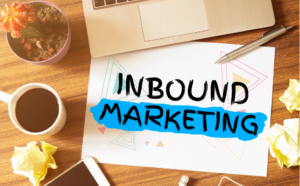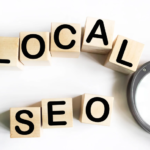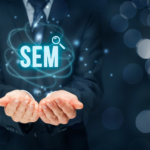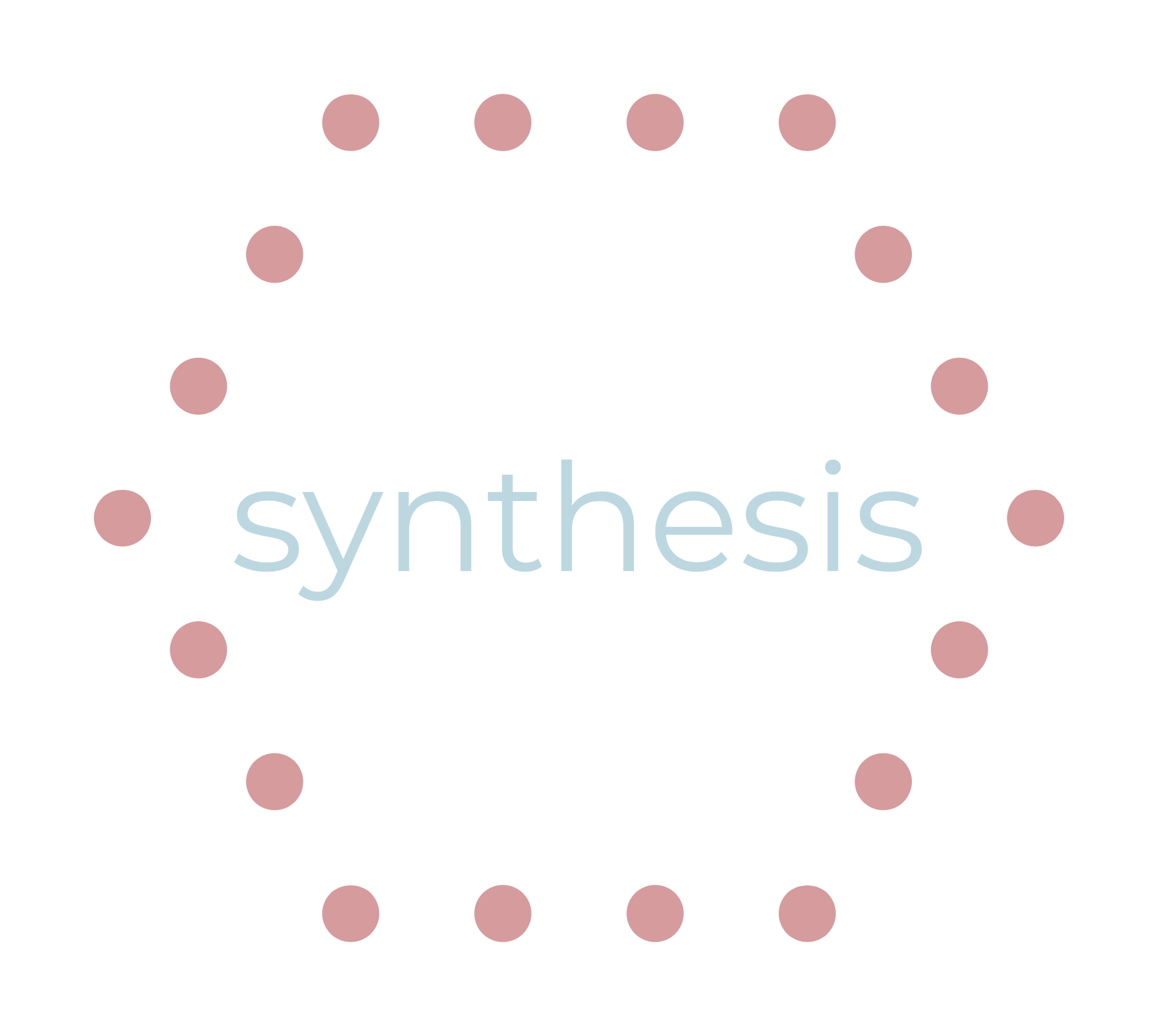In today’s digital age, traditional marketing tactics are no longer as effective when it comes to reaching and engaging with B2B clients. As a result, businesses have faced unique challenges in targeting and reaching their ideal customers. This is where B2B inbound marketing comes in.
B2B inbound marketing is a strategy that focuses on attracting, engaging, and converting potential customers by providing them with valuable, relevant content that aligns with their interests and needs.
In this guide, we will explore the fundamentals of inbound marketing, its key components, and how it can revolutionize your marketing efforts to drive business growth. Whether you’re new to the concept or simply looking to enhance your existing marketing strategy, you’ve come to the right place.
Let’s dive in and discover the power of B2B inbound marketing!
. . .
Contents
. . .
What is B2B Inbound Marketing?
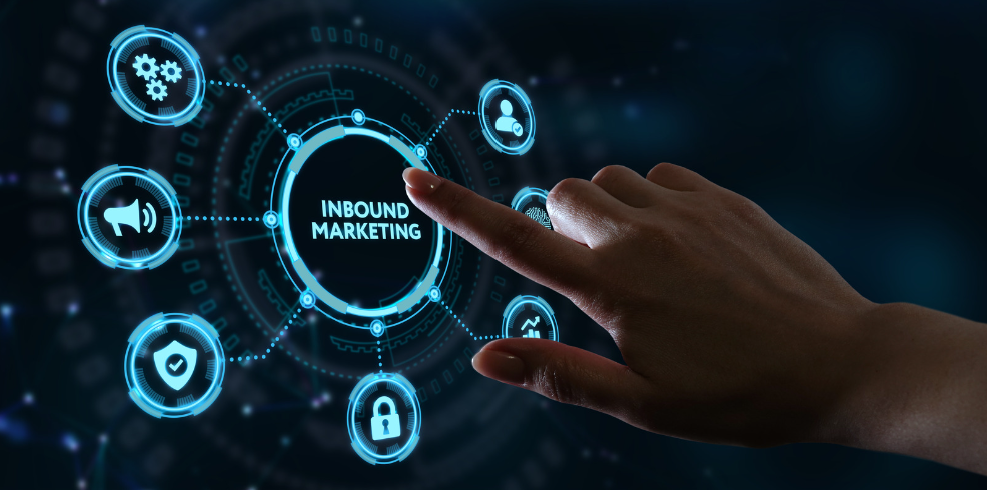
Inbound marketing is essential in the contemporary business landscape, especially in business-to-business (B2B) transactions, due to its customer-centric approach and focus on relationship-building.
Unlike traditional outbound methods that interrupt and push messages onto potential customers, B2B inbound marketing focuses on creating valuable content and experiences to attract, engage, and delight the target audience.
This approach is crucial in B2B transactions where trust, education, and relationship-building play a significant role in the decision-making process.
The B2B Buying Journey

The buyer’s journey (aka, the customer’s journey) and the creation of detailed buyer personas hold immense significance in B2B inbound marketing as they collectively provide a framework for understanding and catering to the evolving needs of potential customers.
Comprising of stages known as awareness, consideration, and decision, the B2B buyer’s journey allows businesses to align their marketing strategies with the specific requirements of prospects at each phase. Simultaneously, crafting detailed buyer personas enables businesses to personalize their approach by developing profiles representing the characteristics and pain points of their ideal customers.
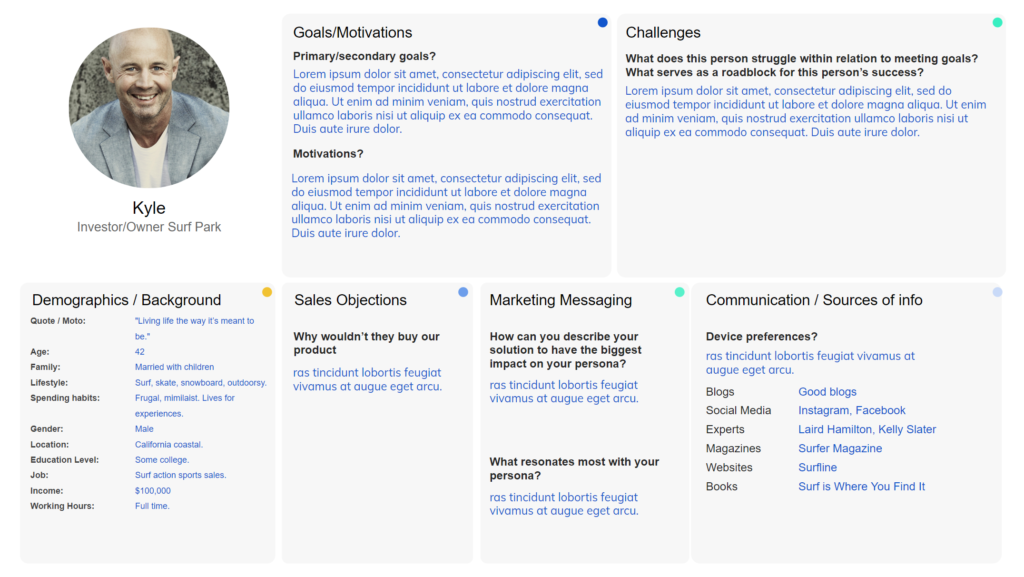
By tailoring content and engagement strategies accordingly, businesses can offer valuable information, address concerns, and build trust, guiding potential customers seamlessly toward conversion. This strategic alignment enhances the relevance and effectiveness of marketing efforts, fostering stronger connections with the target audience and ultimately contributing to successful B2B transactions.
Understanding and optimizing the buyer’s journey is fundamental for businesses aiming to navigate the complex decision-making processes inherent in B2B interactions.
Inbound Marketing Methodology
The Inbound Marketing Methodology is a strategic approach that focuses on attracting, engaging, and delighting the target audience to build meaningful and long-lasting relationships.
This methodology is particularly relevant in the context of B2B inbound marketing, where businesses aim to connect with other businesses by providing valuable and relevant content at each stage of the buyer’s journey.
Attract
At this stage, businesses aim to attract and capture the attention of their target audience by creating and distributing valuable and relevant content. This content is designed to address the needs and challenges of potential customers.
The goal is to capture the attention of the audience, encourage them to discover more about the business, and initiate a connection. This can be done by creating content, leveraging social media for visibility, and implementing SEO strategies.
Engage
Once the audience is attracted, the next step is to engage them actively. This involves providing more in-depth and personalized content, fostering a deeper connection.
The aim is to keep the audience interested, encourage interaction, and guide them through the stages of the buyer’s journey. This may involve lead nurturing, personalized communication, and targeted content delivery, which can be done through developing user-friendly websites, generating leads through compelling offers, and implementing email marketing and marketing automation.
Delight
The delight stage focuses on exceeding customer expectations and providing an outstanding experience. This can include ongoing support, personalized communication, and additional value beyond the initial transaction.
By delighting customers, businesses aim to foster loyalty, advocacy, and positive word-of-mouth. Satisfied customers become promoters, contributing to the business’s reputation and attracting new prospects. This can be done by providing exceptional customer experiences or through ongoing customer communication, loyalty programs, and retention strategies.
Overall, the Inbound Marketing Methodology in a B2B context emphasizes building trust, providing value, and creating a positive customer experience throughout the entire journey. By aligning marketing strategies with the needs of potential business clients, B2B inbound marketing aims to establish strong connections, generate qualified leads, and ultimately drive successful and mutually beneficial business transactions.
Inbound Marketing vs. Outbound Marketing
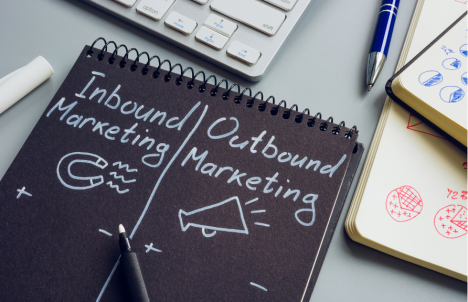
You might’ve heard the term inbound marketing and wondered, “How is it different than outbound marketing?” Inbound marketing is a holistic strategy aiming to attract, engage, and delight customers throughout their purchasing journey.
It encompasses various tactics used to draw prospects in, including content marketing, SEO, social media, and more, with the overarching goal of building strong relationships and delivering value at every stage of the customer’s experience.
Outbound marketing, however, is a more traditional, proactive strategy where businesses actively reach out to potential customers. This includes tactics such as cold calling, direct mail, cold emailing, and LinkedIn outreach. Who hasn’t been annoyed by dozens of LinkedIn messages these days?
The goal of outbound marketing is to push messages to a broad audience by capturing their attention and generating immediate responses. Unlike inbound marketing, outbound strategies are interruptive and may be perceived as less targeted.
Inbound Marketing vs. Content Marketing
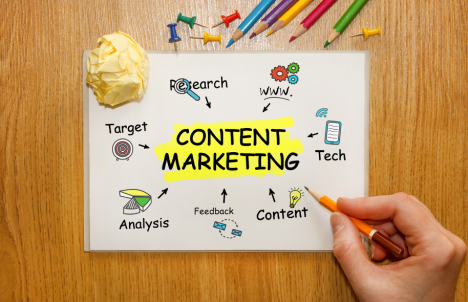
Another form of marketing that is often heard when discussing inbound marketing is content marketing. Inbound marketing and content marketing are related concepts that share similarities but have distinct focuses.
Content marketing is a specific tactic within the broader inbound marketing strategy. It centers on creating and distributing valuable, relevant, and consistent content to attract and retain a clearly defined audience.
While content marketing is a vital element of B2B inbound marketing, the latter encompasses a more comprehensive approach that includes various channels and strategies beyond content creation alone.
In essence, content marketing is a crucial part of the overall inbound marketing methodology, working in synergy to achieve the broader goals of attracting, engaging, and delighting customers.
Benefits of Implementing B2B Inbound Marketing
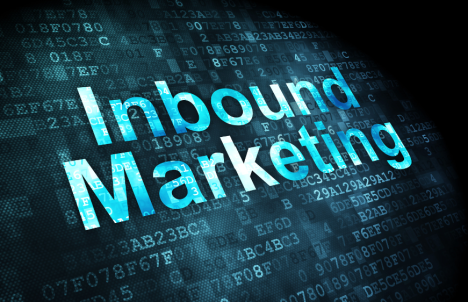
Implementing B2B inbound marketing offers a multitude of benefits that can significantly impact a business’s success in the digital realm:
- Increased Brand Visibility: Inbound marketing strategies enhance your brand’s online presence, making it more visible to your target audience.
- Cost-Effective: Compared to traditional outbound marketing, inbound marketing tends to be more cost-effective, especially in the long run, as it relies on content creation and organic methods.
- Quality Prospects: Inbound marketing attracts prospects genuinely interested in your industry, products, or services, leading to higher quality leads.
- Customer Trust & Credibility: Providing valuable and educational content establishes your business as an industry authority, building trust and credibility among your audience.
- Shortened Sales Cycles: By guiding prospects through the buyer’s journey with informative content, inbound marketing can help reduce the time it takes for a lead to become a customer.
- Measurable Performance: Key performance indicators (KPIs) and analytics tools enable businesses to measure the success of their inbound marketing efforts and make data-driven decisions.
- Improved Customer Retention: Ongoing engagement through valuable content and personalized communication increases customer satisfaction and loyalty.
- Adaptability: Inbound marketing strategies are adaptable to changes in the industry landscape, allowing businesses to stay relevant and adjust their approaches accordingly.
- Enhanced Online Reputation: Consistent, valuable content and positive customer interactions contribute to building a strong online reputation for your brand.
- Global Reach: With a strong online presence, businesses can reach a global audience, expanding their market beyond geographical constraints.
This holistic approach not only attracts and engages the right audience but positions businesses as industry leaders, fosters quality lead generation, and adapts to the dynamic landscape of the digital marketplace. The long-term benefits of B2B inbound marketing include improved brand reputation, customer retention, and a more efficient and cost-effective marketing strategy.
Getting Started with B2B Inbound Marketing

Content Marketing
Content marketing is a strategic approach within B2B inbound marketing that creates and distributes valuable, relevant, and consistent content to attract and engage a target audience. The primary goal is to build brand awareness, establish authority, and drive profitable customer action.
This entails the creation and usage of various content types and social media platforms focused on providing information that addresses the audience’s needs and interests, fostering trust, and building long-term relationships. Additionally, implementing SEO strategies will help enhance the visibility of your business and draw in the target audience through organic search.
This includes:
- Content Creation
- Creating valuable and relevant content
- Importance of quality over quantity
- Types of content (blog posts, whitepapers, videos, etc.)
- Social Media Marketing
- Selecting the right social media platforms
- Building social media content calendars
- Leveraging social media for lead generation
- Search Engine Optimization (SEO)
- Keyword research and optimization
- On-page and off-page SEO
- Link building for B2B companies
- Overlaps between attract and engage principles
Lead Generation
Lead generation, on the other hand, is the process of identifying and capturing potential clients interested in the products or services offered.
Content marketing and lead generation are often confused with one another because of their overlapping characteristics and interconnectivity within the broader B2B inbound marketing strategy. However, they represent distinct components.
The focus is on obtaining contact information and initiating a direct relationship with leads to guide them through the sales funnel by strategically placing lead capture mechanisms (such as forms, landing pages, or gated content) within the content.
This includes:
- Lead Magnet Development
- Creating valuable resources for lead generation
- Landing page optimization & developing user-friendly websites
- Forms and data collection best practices
- Generating leads through compelling offers
Marketing Automation
Marketing automation, which combines the efforts made through content creation and lead generation, streamlines and automates repetitive tasks. This allows businesses to nurture leads efficiently and personalize communication through the sales funnel, which is often done through email marketing.
This includes:
- Email Marketing
- Setting up and managing automated campaigns
- Personalizing email campaigns and nurturing leads
- Analyzing and refining automation strategies
In the context of B2B inbound marketing, these three pillars work synergistically. Content marketing attracts and engages the audience, lead generation captures potential clients, and marketing automation streamlines the nurturing process, contributing to increased brand visibility, trust, and successful conversions.
Understanding and harnessing the power of these core pillars are essential for businesses looking to navigate the intricacies of B2B inbound marketing and establish a robust online presence.
Staying Updated with Industry Trends

Staying up-to-date with industry trends is an important part of B2B businesses optimizing their marketing strategy for sustained success. As technologies, consumer behaviors, and market dynamics undergo constant shifts, staying informed ensures that businesses can adapt their strategies to remain relevant and competitive.
The evolving landscape of B2B inbound marketing encompasses a variety of factors that businesses need to navigate effectively:
- Emerging Technologies & Tools: Staying abreast of technological advancements and emerging tools is crucial. This includes innovations in data analytics, artificial intelligence, and marketing automation, which can significantly impact the effectiveness of B2B inbound strategies.
- Navigating Shifts in Search Algorithms: With search engines continually refining their algorithms, B2B marketers must stay agile. Adapting content strategies to align with evolving SEO best practices ensures sustained visibility and relevance in search results.
- Competitor Strategy Insight: Understanding and analyzing competitor strategies provides valuable insights. Monitoring competitor movements helps in identifying trends, differentiating offerings, and refining one’s own B2B inbound approach for a competitive edge.
- Integration of VR & AR: The integration of virtual (VR) and augmented reality (AR) experiences is gaining traction. B2B marketers are exploring immersive content formats, such as virtual events and augmented reality demonstrations, to engage and captivate their audience.
- VoC Strategies: Listening to the voice of the customer (VoC) is becoming more central. Implementing robust VoC strategies, including surveys, social listening, and customer feedback analysis, helps in understanding and addressing the specific needs and preferences of the B2B audience.
- Localized & Globalized Content Strategies: Striking a balance between localized and globalized content is increasingly important. Tailoring content to specific regional nuances while maintaining a globally consistent brand message ensures resonance with diverse B2B audiences.
- Interactive Webinars & Virtual Events: The popularity of interactive webinars and virtual events is on the rise. B2B marketers are leveraging these platforms to connect with their audience in real-time, share industry insights, and facilitate meaningful interactions.
- Humanizing Brand Personas: Humanizing brand personas is gaining significance. B2B audiences respond well to authentic and relatable brand personalities. Strategies that showcase the human side of businesses contribute to building stronger connections and trust.
- Optimizing for Mobile Devices: With mobile usage continuing to surge, optimizing content and experiences for mobile devices is imperative. Responsive design, mobile-friendly content, and streamlined user experiences on smartphones and tablets are integral components of successful B2B inbound strategies.
- Personalized ABM Campaigns: The evolution of Account-Based Marketing (ABM) includes a heightened focus on personalization. Tailoring campaigns for specific target accounts with personalized content and messaging enhances the effectiveness of ABM initiatives.
- Emphasis on Customer Retention: Beyond acquisition, a renewed emphasis on customer retention is observed. B2B marketers recognize the value of ongoing engagement, customer satisfaction, and loyalty-building initiatives for long-term success.
Staying informed about industry trends is crucial for B2B businesses aiming for sustained success in their marketing strategies. The evolving landscape of B2B inbound marketing, marked by immersive technologies, competitor insights, and customer-centric approaches, emphasizes the importance of remaining adaptable and prioritizing customer satisfaction and loyalty for long-term prosperity.
. . .
Conclusion
This introductory guide to B2B inbound marketing provides a foundational understanding of the methodology’s core principles. From attracting potential clients with tailored content to engaging them throughout the buyer’s journey and delighting them with exceptional experiences, B2B inbound marketing aims to revolutionize how businesses connect and transact.
By emphasizing trust-building, value provision, and a positive customer journey, businesses can position themselves for long-term success in the ever-evolving landscape of B2B interactions. As you embark on your B2B Inbound Marketing journey, let this guide serve as a compass, offering insights and strategies to navigate the complexities of modern business marketing effectively.
. . .
If you enjoyed reading content like this, feel free to check out the other blogs on our website. For more information on how to implement your B2B inbound marketing strategy, you can reach out to us for a free consultation. We’d love to get you started on your Synthesis Insights journey today!

